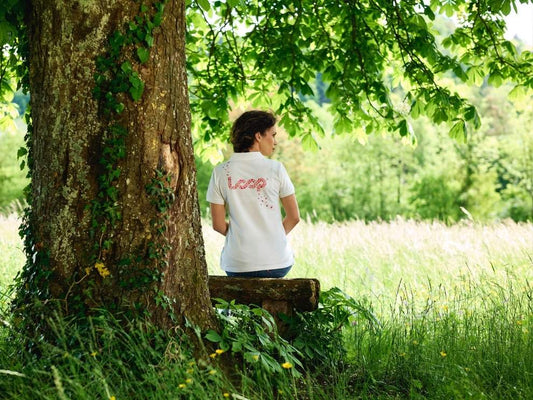

13061+ 5-star ratings
Excellent 4.7
#1 fair clothing,
that plants trees
Our bestseller now also for little adventurers

High-quality production in Europe

Every product plants a tree

Organic cotton & recycled fabrics

Become part of the movement!

NEW ARRIVALS










Known from:





NIKIN - Your brand for sustainable fashion

BEST SELLERS








TreeShirt 5-Pack






TreeShirt Women 5-Pack
Become part of our loyalty program and benefit!
Join the TreePlanter Club for free, collect points and enjoy exclusive benefits with every online purchase.

Our path to 100% circularity by 2030
At NIKIN, we have set ourselves the goal of making all our products 100% circular by 2030. Our mission is clear: to create clothing that does not harm nature - and the circular economy is the key to achieving this.
With the innovative naNea material, which is biodegradable and repeatedly recyclable, and our "Circular Cashback" program, we ensure that our products remain in the cycle.

Our tree planting projects
Want to know where your tree will be planted?
Whether more habitat for endangered chimpanzees or the reforestation of mangroves in coastal regions: In cooperation with the American non-profit organization One Tree Planted, we support different projects around the world every month thanks to your help.
With our pedetracker, you can find out where your trees are and which projects NIKIN has supported so far!

Recent contributions
-
Sustainable fashion with a clear message for Switzerland and the world
At NIKIN, we are convinced that fashion should carry a message and benefit the environment at the same time. That's why we are committed to producing sustainable outdoor clothing that not only gets you from the mountain to the sofa well dressed, but also makes a sustainable contribution to protecting our planet.
We use sustainable materials such as GOTS-certified organic cotton or innovative and resource-saving fiber alternatives such as Polylana®, which not only protect the environment but also offer an incomparably soft feel.
Thinking fashion sustainably
Our passion for nature is reflected in every seam of our sustainable clothing. But what exactly makes our fashion sustainable? It is the combination of ecological responsibility and social commitment that we have stood for from the very beginning and are constantly expanding. Every purchase from us contributes to global reforestation and supports our mission to be a first mover in sustainable innovation, making a difference to the mass disposable culture of the fashion industry.
Our customers can therefore not only buy timeless outdoor clothing online - they are investing in a better future and in reliable clothing that will accompany them on every step of their adventures.
-
Buy timeless clothing with a positive impact
Since the launch of our Swiss fashion label NIKIN, it has been important to us to stand for more than just fashionable clothing. With our platform, we offer an online clothing store that guarantees a direct contribution to environmental protection with every product sold. With our clothing, we clearly advocate durable products that still look modern, are comfortable and environmentally friendly at the same time.
Our garments, from the NIKIN TreeShirts Women and men to the TreeCaps and TreeSocks, are all produced in Europe under fair working and manufacturing conditions.
Modern and responsible clothing
At NIKIN, we are committed to the community. Our customers are part of a great movement that shows that you can have modern styles and act responsibly at the same time. By buying our outdoor clothing, you are automatically part of this change.
Our commitment to transparency and community even lets you take a look behind the scenes: From our Sustainability page, you can find out exactly where and how your clothing is produced.
We invite you to become part of our community and make the world a better place with every product you choose. Be part of a movement that stands up for real, sustainable change: be part of the NIKIN community.









































